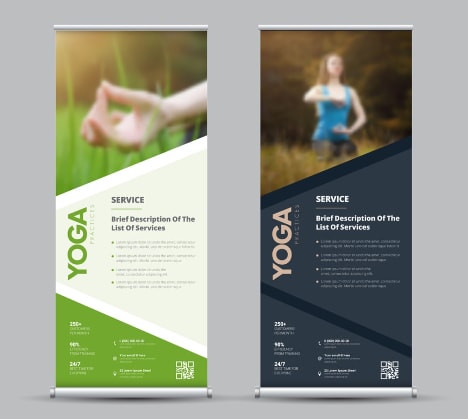QR codes offer the unique ability to digitize real-world advertisements and engagements. The COVID-19 pandemic showed us how QR codes can be a quick and effective way to perform several digital tasks.
While QR codes are being used in several advertisement campaigns, they are often poorly executed. Here are 5 ways you can use QR codes more effectively.
Use Dynamic QR Codes
QR codes may all look similar in their overall shape and design, but there are two distinct types of QR codes - static and dynamic. Static QR codes simply direct a user to the encapsulated data. Once a static QR code has been created, it cannot be changed.
Dynamic QR codes have several advantages. The data they store can be updated at any time without having to re-create (or re-print) the QR code. Upon scanning, the user is first directed to a cloud server, then redirected to the (up to date) destination of the QR code.
We often see static QR codes being used for restaurant menus; However, this use-case can be enhanced manifold if unique dynamic QR codes are used instead. A unique dynamic QR code could be added to each table, which can then be used to track orders and even pay the bill.
Openscreen's QR code engagement solutions bring dynamic QR codes to the next level by capturing the scanning device's non-identifying data. This includes valuable information such as ISP-based location, IP address, device kind, device model and much more.
Over time, this data can help you make informed decisions for your future marketing campaigns.
Ensure the QR Code Landing Page is Mobile-Friendly
Since QR codes will be scanned by smartphones, it is crucial that you have a mobile friendly landing page. For the best user experience, any other links or CTA's on the landing page should also be mobile friendly.
Keep in mind that iPhones, Android phones and Samsung phones, all use a different default mobile browser (safari, chrome and Samsung browser respectively), which may each render your landing page differently.
Place QR Codes in an Easy to Scan Environment
While the operation of a QR code is instantaneous, it may take several seconds for a customer to scan your QR codes.
For this reason, QR codes should not be placed on moving vehicles, changing billboards or TV commercials.
The ideal location for QR codes is in an area with high pedestrian traffic. Additionally, QR codes should be placed in a relatively central position of your banner, at about eye level from the ground.
In the picture below, the QR codes are placed in an inconvenient spot. This should be avoided whenever possible.
Consider the Size and Scan-ability of the QR Code
The size of the QR code is another key aspect in marketing campaigns. A QR code placed on a banner outdoors should be of a relatively large size to ensure scan-ability from a distance.
A QR code on a curved surface, such as a wine bottle, should be as small as possible to allow high scan-ability.
QR codes also have an error correction feature built-in. Different levels of error correction can determine how "durable" and scannable a QR code is. Read more about error correction levels here.
Create Contacts from Your Interested Audience
Having captured the interest of your customer and getting them to scan your QR code is only a partial victory in a marketing campaign.
To make the most out of the campaign, you should prompt your audience to be added to your newsletter. You can do so with the help of an enticing promotion/coupon which would be available to customers only after providing their contact information. You can then export this information to your CRM platform and start populating a list of consented contacts. An application like Openscreen can help you curate and obtain contact information through QR codes and organizes the list in a seamless visual dashboard with easy access to your data.
Conclusion
One of the most important aspects of any advertising campaigns is to simply know its success rate. The above 5 practices will ensure that every single QR code campaign will generate valuable data and will have a measurable success rate. Additionally, you will be able to concentrate your resources on your most (and least) successful advertising locations.
To allow you to create your first dynamic QR codes for your advertising campaigns, I invite you to check out Openscreen. It is a one-stop, developer-first platform that offers all the tools to run a successful QR code campaign.
Openscreen also provides a native ability to store Customer Contact information from QR code scans. The data you collect from your QR code campaigns is available for you to visualize in the Openscreen dashboard.
For tailored solutions, feel free to contact Openscreen.





Top comments (0)